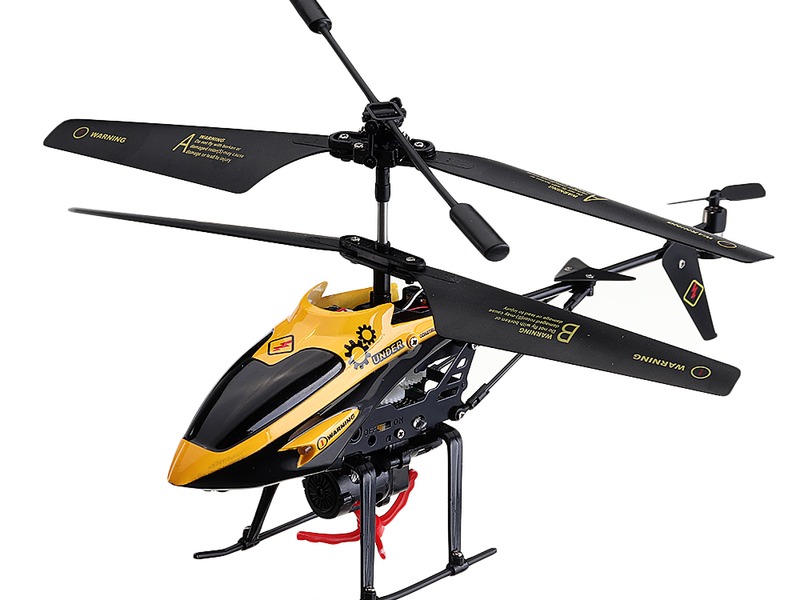How does a RC helicopter move forward?

A remote-controlled (RC) helicopter is an aircraft that is controlled remotely by a pilot from the ground. RC helicopters can be used for a variety of purposes, including aerial photography, search and rescue, recreation, and even military operations. One of the most important aspects of flying a RC helicopter is understanding how it moves forward. This article will explain how a RC helicopter moves forward and provide some tips for successful flight.
A RC helicopter moves forward by using its main rotor blades. These blades spin around the main shaft of the helicopter and generate lift, which allows the helicopter to move forward. The main rotor blades are connected to a swashplate, which can be moved up or down to adjust the pitch of the blades. By adjusting the pitch of the blades, the pilot can increase or decrease the amount of lift generated, allowing the helicopter to move forward or backward.
In addition to the main rotor blades, a RC helicopter also has tail rotor blades. These blades are used to control the direction of the RC helicopter. By adjusting the pitch of the tail rotor blades, the pilot can make the RC helicopter move left or right.
When a pilot wants to make a RC helicopter move forward, the main rotor blades must be pitched down to increase the lift. At the same time, the tail rotor blades must be pitched up to counteract the torque created by the main rotor blades. This creates a forward thrust that propels the RC helicopter forward.
In order to make a RC helicopter move forward successfully, the pilot must maintain a steady balance between the main and tail rotor blades. If the main rotor blades are pitched too low, the RC helicopter will not generate enough lift to move forward. On the other hand, if the main rotor blades are pitched too high, the RC helicopter will rise too quickly and the tail rotor blades will not be able to counteract the torque. As such, it is important for the pilot to find the right balance between the main and tail rotor blades in order to make the RC helicopter move forward successfully.
In order to maintain a steady balance between the main and tail rotor blades, the pilot must also adjust the throttle. If the throttle is too high, the RC helicopter will move forward too quickly, which can result in loss of control. On the other hand, if the throttle is too low, the RC helicopter will not generate enough lift to move forward. As such, it is important for the pilot to adjust the throttle accordingly in order to maintain a steady balance between the main and tail rotor blades.
In conclusion, a RC helicopter moves forward by using its main and tail rotor blades. The main rotor blades generate lift that propels the RC helicopter forward, while the tail rotor blades counteract the torque created by the main rotor blades. In order to make a RC helicopter move forward successfully, the pilot must maintain a steady balance between the main and tail rotor blades by adjusting the pitch of the blades and the throttle. By understanding how a RC helicopter moves forward, the pilot can have a successful and enjoyable flight.
Comments / Question
2. Ensure the battery is fully charged before each flight.
3. Always inspect the RC helicopter before each flight, checking for any loose screws, frayed wires, or loose components.
4. Wear proper eye protection to protect against debris or an object hitting your eye.
5. Never fly in bad weather conditions—wait until the weather is clear and calm.
6. Fly in an open, outdoor area away from buildings, trees, and other obstacles.
7. Make sure your radio controller has enough range for the area in which you plan to fly.
8. Make sure to read and understand all safety instructions and manuals before piloting the RC helicopter.
2. Tail Rotor: The tail rotor is a smaller rotor located at the tail of the helicopter. It provides thrust to counter the torque created by the main rotor, allowing the helicopter to move forward.
3. Motor: The motor is responsible for powering the main and tail rotors. It is usually an electric motor, but some RC helicopters use nitro engines.
4. Battery: The battery is the power source for the motor. It is usually a rechargeable lithium-ion battery.
5. Radio Receiver: The radio receiver is the device that receives signals from the transmitter. It is responsible for controlling the motor and other components of the RC helicopter.

